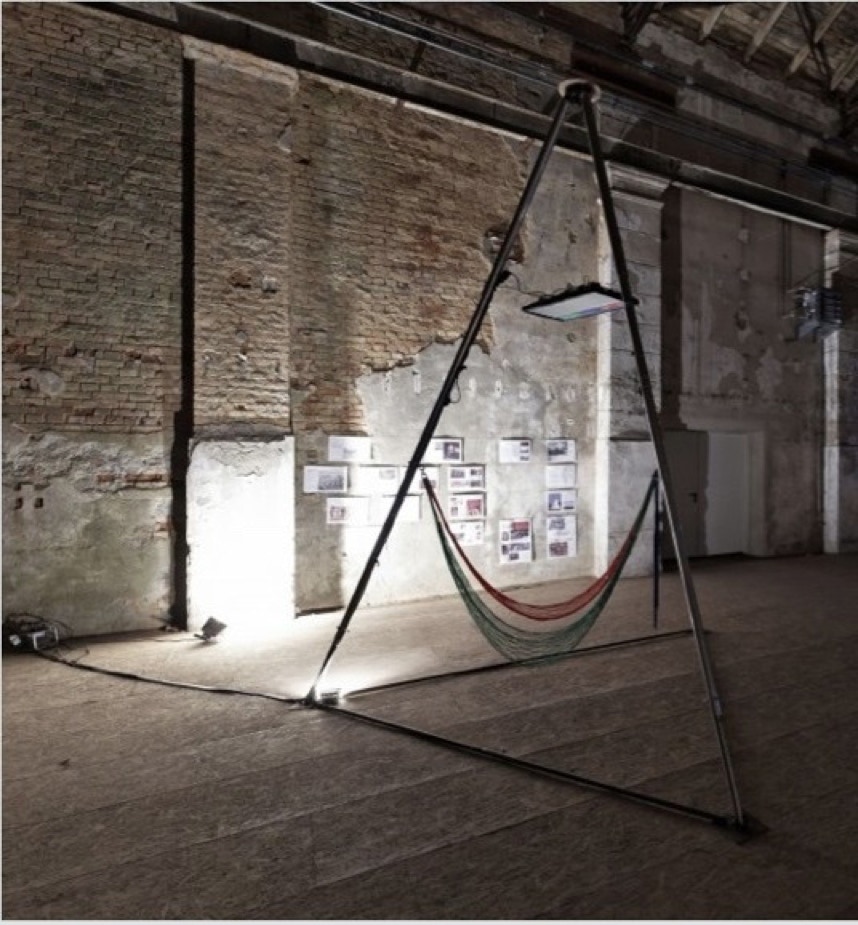BODENLOS_H0M0LUDENS (2015)
Interactive generative installation
The installation structure is inspired by the fishing/hunting expeditions of the Wayãpi People and the communal tripod’s ephemeral/transitory presence in the landscape. A structure to rest, to converse with one another, to dream. A place for Homo ludens to coexist with the Homo faber in all of us.
The installation was initially planned for the exhibit Bodenlos – Vilém Flusser und die Künste at Akademie der Künste Berlin 11.2015–1.2016, but due to reduced space dedicated to the entire exhibit, the installation premiered at Kunstkraftwerk Leipzig after a short show at UdK’s own gallery space.
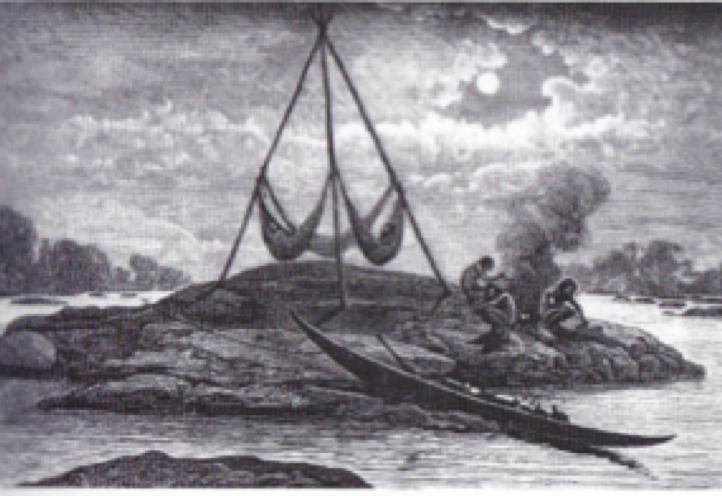
BODENLOS_H0M0LUDENS is a network of objects as communicable entities, live motion media and humans functioning as an assemblage (enabled via sensors and programming code to capture and transform images of the hammock occupants). Assemblage “animism” as a space for the embodiment of multiple points of view, inspired by the concept of Amerindian Perspectivism.
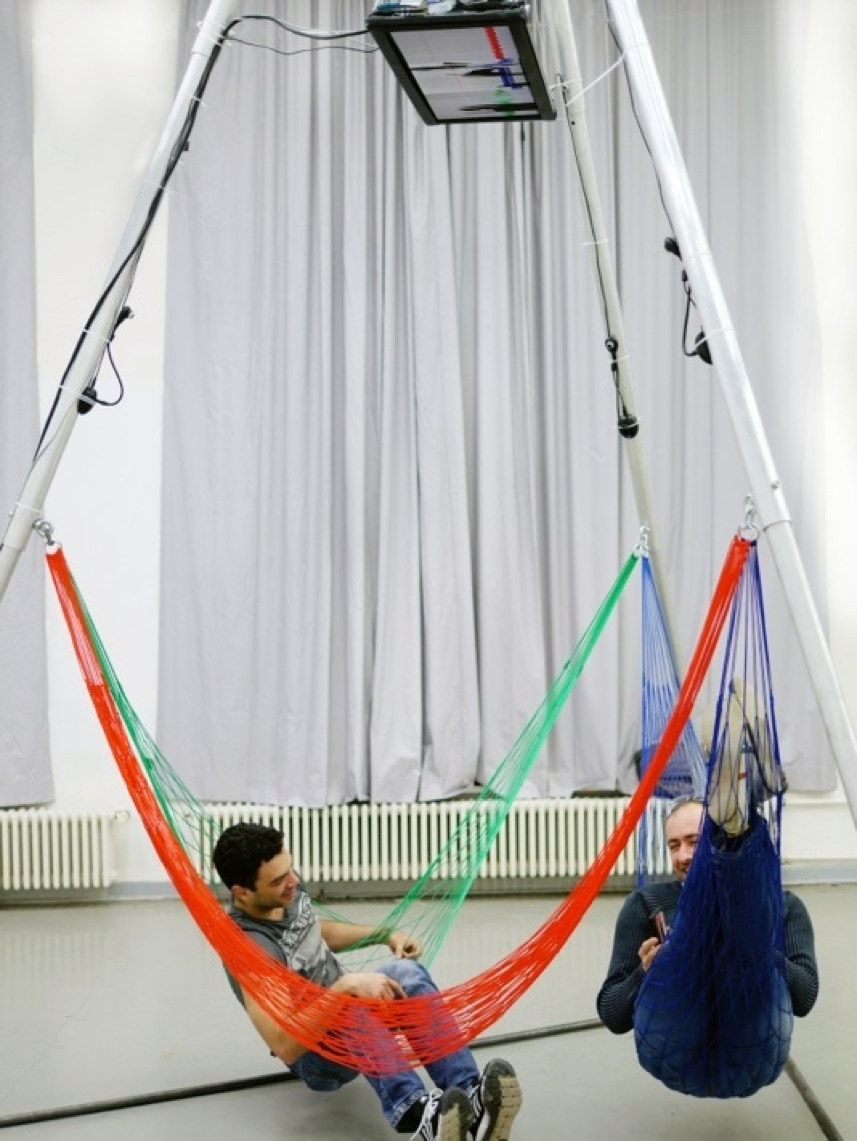
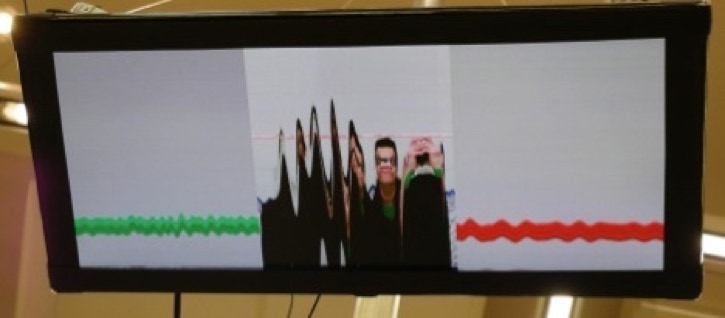
About the research component:
“Bodenlos” was Vilém Flusser’s philosophy of life, which sees the personal networks spread across borders as the only possible means to reconnect ourselves amidst the groundlessness of a shifting reality. His media theory proposes interconnectedness and that electronic images have a magical-mystic quality and are a result of scientific thinking. He describes a photographer-apparatus black box, a system that is complex enough with its programming and design that it cannot initially be penetrated by the user. The obscurity of this black box is the challenge presented to the Homo Ludens (“der spielende Mensch”, a concept of playfulness coined by Johan Huizinga, which was adopted by Flusser). My interactive installation places the Homo Ludens (the visitors) as a player in a ludic structure and as Flusser proposes, it is while Homo Ludens is lost in the mystery of the black belly of the apparatus, that we manage to somehow control it. In this installation, the apparatus is a playful structure with which to make images at leisure, without pressing buttons, because the apparatus is an autonomous sensing device that plays with Homo Ludens.
Flusser’s poetic description of the photographic image-capture categories (angles, focal length, etc) bear an uncanny similarity to the Amerindian shamanic (multi)-perspectivism. Flusser further remarks that the lighting-speed (lens shutter-speed) of various region registrations form a network, through whose fabric, cultural conditions start to emerge so that they can be perceived. From this Amerindian conceptual connection, I create the interaction via the use of hammocks. The hammocks (weaved net structures) create content via sensing electro-neural networks.
In that sense, the installation is a generative, interactive and participatory installation that captures and displays the occupants of the structure in their various perspectives, catching them seeing themselves. This sort of flirting is further altered in the space-time continuum of the slitscanning process. This structural imaging technique is attained via creative coding. The creature scans the “landscape” with its eye-cameras and outputs the playful images on the ultrawide video monitor. The “creature”, the Bodenlos_HomoLudens installation, which becomes one with the participants as an assemblage, absorbs the guests in their moment of interaction. The creature scans its surroundings as an act of image-hunting of its landscape: the image of each of the three cameras (Red, Green, Blue - representing the digital color space) is rewritten from left to right erasing the previous scan while new impressions and a trace are formed.
When the installation Bodenlos_HomoLudens is unoccupied, the three hammocks (the creature’s cradling arms) generate a “calm heartbeat” (as shown in the green and red sine waves). When visitors approach the hammocks and sit/lie in them, the heartbeat of the creature (Bodenlos_HomoLudens) gets altered and animated as shown in the sine waves containing more movement. Also, if the visitors get snapped by the eyes (cameras) of the creature, the video monitor displays the affected image. This is what the “creature” sees and animates as a live digital alterity of the visitors, creating an intersubjectivity.
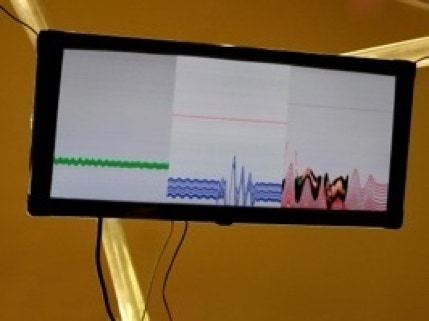
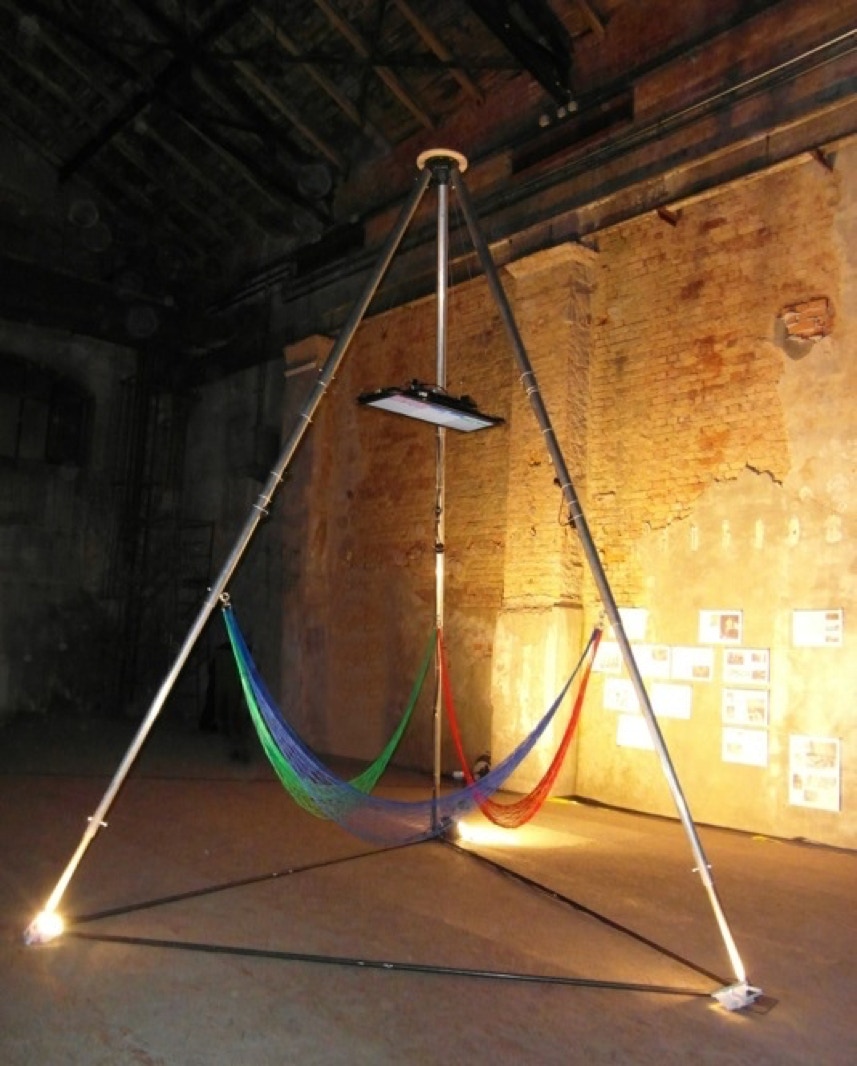
Installation at KunstKraftWerk Leipzig, 4/2015, at the exhibit DEVOUR! Social Cannibalism, Political Redefinition and Architecture. Exhibit Documentation:http://www.kunstkraftwerk-leipzig.com/de/art-design/2015-devour-sozialer-kannibalismus-politische-neudefinierung-und-architektur.html
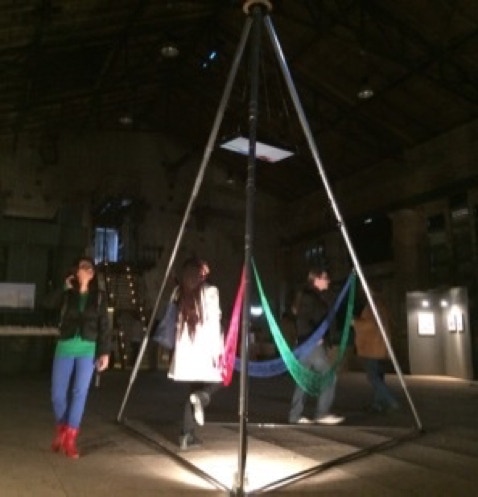
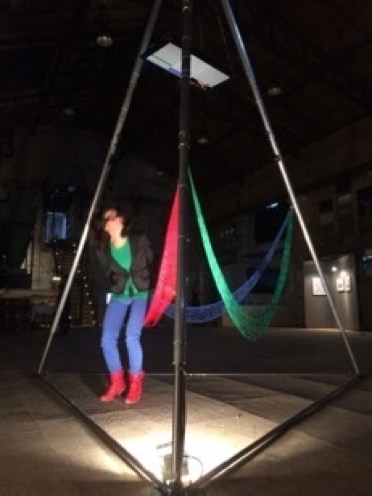
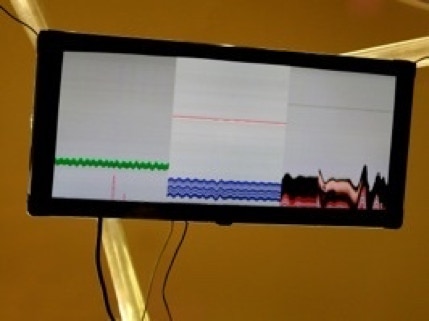
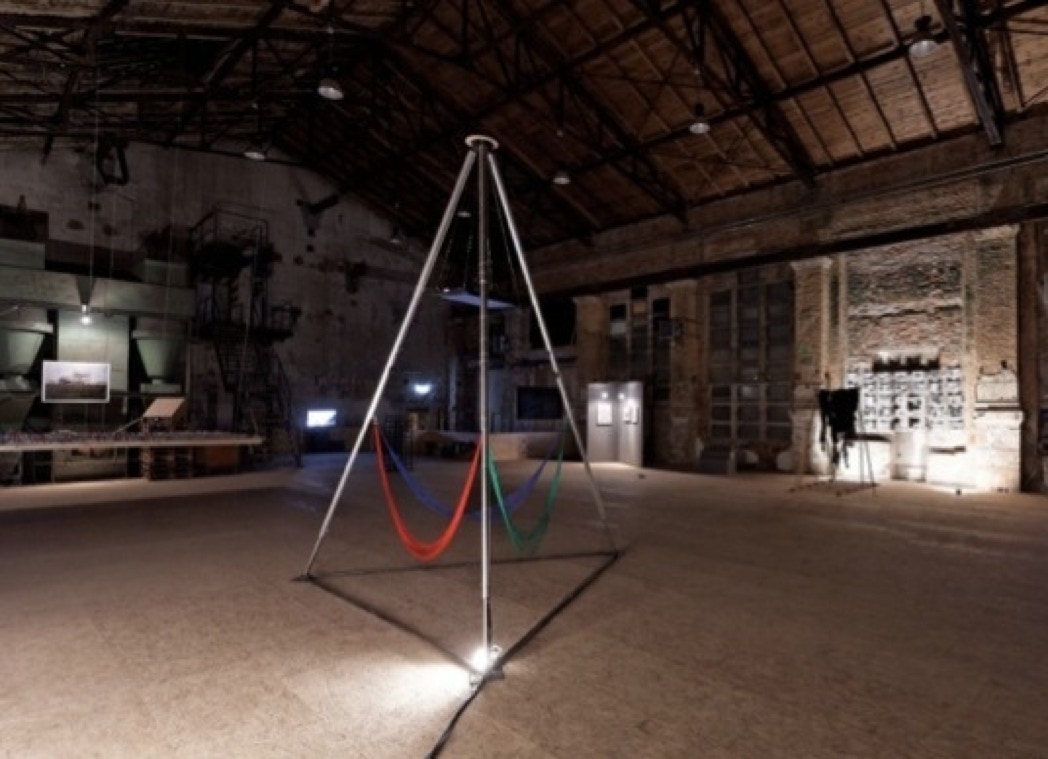
The research component of Bodenlos_Homo Ludens was shown next to the installation as a series of 20 prints.

At DEVOUR! exhibit Kunstkraftwerk Leipzig. Photos courtesy of dotgain.
